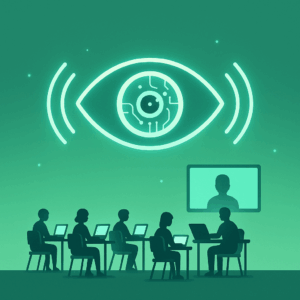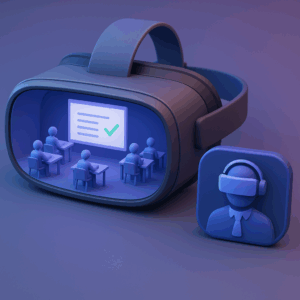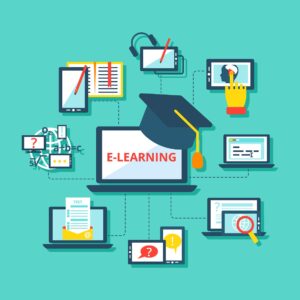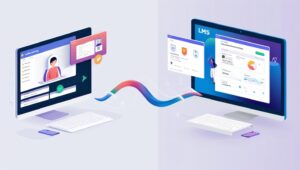Online learning, which gives students flexibility and accessibility, has quickly become a successful substitute for traditional classroom-based education. It frequently requires more interaction and participation in in-person learning opportunities, though. This issue may find its resolution in virtual reality (VR) technology, which improves the eLearning platform environment by providing an immersive and engaging experience. In this blog, we shall examine the advantages and disadvantages of virtual reality (VR) and its potential for the future of education. VR has an impact on online education.
With the flexibility and accessibility to study and learn at the speed of online learning, it has completely changed the educational landscape. On the other hand, face-to-face instruction may require greater interaction and participation than standard online instruction. To improve the online learning environment, virtual reality (VR) technology provides an immersive and engaging experience. In this blog, we shall examine the advantages and disadvantages of virtual reality (VR) and its potential for the future of education. VR has an impact on online education.
Virtual reality: What is it?
Virtual reality (VR) technology is a computer-generated simulation that imitates an environment and offers experiences through auditory and visual cues. Users can interact with and explore the virtual environment by donning a headgear that tracks their movements.
Although virtual reality (VR) technology has existed for many years, it has only recently been more widely available and reasonably priced due to technological improvements. Virtual reality (VR) has many applications, from gaming and entertainment to healthcare and education.
Importance of VR for Students?
Because virtual reality education provides an immersive and engaging learning environment, it can improve students’ comprehension and recall of course information. Virtual reality (VR) can level the playing field for students with varying learning styles or abilities, increase student motivation and engagement, and offer hands-on experience without the hazards and expenses that come with it. VR will play a bigger role in education as a tool as technology develops and gets more accessible, giving students a more engaging and productive learning environment.
Online Learning Impact and Importance
Online learning is significant as it allows students to access education regardless of their schedule or location. Students may study at their own speed and on their own time with online learning, which makes it simpler to balance their education with other obligations, including family, job, and other commitments. In addition to providing a greater selection of courses and programs, online learning enables students to follow their interests and professional objectives. Additionally, because it does not involve transportation, accommodation, or other fees, eLearning may be less expensive than traditional education. As technology develops, online learning will become a more vital tool for workforce development and education.
Benefits of Online Learning
When it comes to kids, there are several benefits that online learning has over traditional classroom instruction. Students may access lectures and course materials from any location, giving them flexibility and convenience in the first place. Second, more online courses and programs are frequently available, enabling students to follow their interests and professional aspirations. Thirdly, since there are no longer any out-of-pocket fees for accommodation, transportation, or other costs, it may be more economical. Fourth, since students are required to assume greater responsibility for their education, online learning can foster critical thinking abilities and self-directed learning. Lastly, e-learning can encourage networking and cooperation among students from various places and backgrounds.
Amalgamation of Virtual Reality in Online Learning
The potential to give students an immersive and engaging experience is one of the main advantages of virtual reality in online education. With virtual reality (VR), learners can explore and engage with course material in a way that feels more like a real-world experience, unlike typical online learning environments, with frequent restrictions on reading text and viewing videos.
VR might be used, for instance, by a medical student learning anatomy to examine the human body in three dimensions. It helps kids comprehend the body’s functions and the connections between its many sections. Similarly, a geography student may use virtual reality to travel the globe. It allows kids to engage with many cultures and situations at a level that isn’t feasible in a conventional classroom.
Virtual reality (VR) offers an immersive learning environment and increases student retention and engagement. According to a University of Maryland study, students who utilized virtual reality (VR) to learn were able to remember material better than those who used traditional methods. Rather than just reading or watching, virtual reality (VR) enables students to learn by doing.
Obstacles for Virtual Reality in Online Learning
VR could revolutionize online learning, but several issues need resolution first. The largest obstacle is accessibility. Even if the cost of VR technology has decreased recently, not everyone can still use it. To use virtual reality (VR), students need to pay for the equipment, a powerful computer, and a fast internet connection.
The requirement for specialist content is another difficulty. VR requires content specially created for the platform, which can be costly and time-consuming. This implies that not all courses are compatible with virtual reality technology and those that can need more help and resources.
And then, there’s the comfort of the user. Some students could feel uneasy or suffer motion sickness when using VR. This encounter may negatively impact their capacity to learn and interact with the course material.
The potential of Virtual Reality in Online Learning
Virtual reality has a bright future in online education despite its difficulties. We anticipate seeing more establishments and businesses integrate virtual reality into their eLearning initiatives as technology develops and gets more reasonably priced.
Several institutions are already implementing innovative VR use. The University of Arizona, for instance, has produced a virtual reality simulation. Before joining the workforce, this simulation allows students to investigate several career paths and obtain practical experience. Similarly, the University of Central Florida has developed a virtual laboratory for physics students through virtual reality. This technology allows them to conduct research in a secure and regulated setting.
As VR technology improves, we can expect new applications and use cases. For example, VR could create personalized learning experiences that adapt to the needs and learning.
Summing Up
Let’s wrap up our discussion about how metaverse virtual reality affects online education. This technology can completely change the way we interact with and learn from the course material. Even though issues such as pricing and accessibility are still waiting for resolution, the advantages of virtual reality in education are inarguably immense. We may anticipate a new education era as more establishments and businesses integrate virtual reality into their online education initiatives. This removes obstacles and gives students an engaging, participatory experience.











